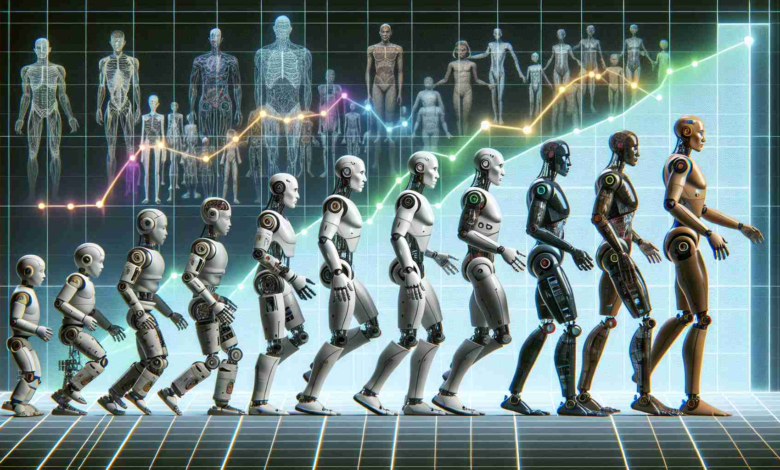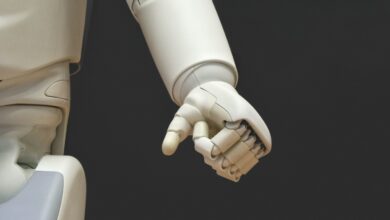The Evolution of Humanoid Robots and Their Market Dynamics

Unlocking the Potential of Humanoid Robotics in the Tech Industry
The realm of humanoid robotics is experiencing a surge of development, notably fueled by industry leaders in AI and robotics. A prime example is Tesla, with Elon Musk repeatedly emphasizing their identity as an AI and Robotics company. Following the pre-approval of Musk’s remuneration proposal, it signals a likely increase in his dedication to Tesla, potentially accelerating robot-related initiatives.
Revolutionary Progress in Humanoid Robot Industry with Tech Giants’ Increased Investment
Innovations in artificial intelligence, such as Nvidia’s introduction of the concept of ‘Physical AI’ at the ComputeX conference, hint at a future where AI can seamlessly interact within our physical world. This prototypical understanding of AI is expected to find its expression through robots that will serve as a bridge between physical reality and AI technology.
New Horizons in Robotics: The Reinvigoration of Core Teams and Global Investments
A testament to the growing interest in robotics is OpenAI’s revival of their robotics division, aiming to offer integrable solutions for robot manufacturers. Likewise, Tesla has reopened its robot team’s recruitment doors, seeking engineers across various competencies, indicating an aggressive talent acquisition strategy by global tech giants to push the frontiers of robotic development.
Supply Chain Enterprises Gear Up for a Commercial Breakthrough in Humanoid Robotics
In concurrence with the rising demand for humanoid robots, core companies within the supply chain are gearing up for this anticipated growth. Notable shifts such as the launch of a new subsidiary by Sanhua Intelligent Controls to focus on motor manufacturing and R&D are illustrative of the sector’s proactive stance in embracing commercial milestones.
Investors are advised to keep a close watch on technological advancements and product developments from these tech behemoths, as well as enterprises involved in the production of key robot components and those poised to benefit from the application of humanoid robots.
The Growing Impact of Humanoid Robots on Society and Economics
The evolution of humanoid robots has been significantly influenced by recent advancements in artificial intelligence, machine learning, and materials science. Factors not mentioned in the article include the necessity for humanoid robots to engage in complex environments that have been traditionally challenging for robotics, such as health care and disaster response. In these instances, the ability of robots to maneuver in environments designed for humans and to manipulate objects as a human would is of paramount importance.
Key Questions and Their Answers
What are the potential industries humanoid robots can influence?
Answer: Beyond the technology sector, humanoid robots have potential applications in healthcare for patient care, in entertainment as performers, in the hospitality industry as service providers, and in dangerous environments like space exploration or disaster response where they can operate in place of humans.
What is driving the development of humanoid robots?
Answer: Factors driving development include the need to automate complex tasks, compensate for labor shortages, improve operational safety in hazardous environments, and assist with the aging global population.
What technological breakthroughs have been pivotal for this evolution?
Answer: Innovations crucial for the evolution of humanoid robots include the miniaturization of sensors, advancements in battery life and energy efficiency, breakthroughs in artificial intelligence, and the development of new, lighter, and stronger materials.
Challenges and Controversies
One of the significant challenges in humanoid robotics is the uncanny valley—the notion that as robots become more human-like, they elicit feelings of unease or discomfort in people, which can be detrimental to their acceptance. Ethical concerns also arise regarding labor displacement and privacy. Furthermore, creating highly functional humanoid robots entails considerable costs and sophisticated engineering, which can be a pivotal factor in their widespread adoption.
Another controversy involves the potential for these robots to be used in military or surveillance applications, raising questions about the implications for privacy and warfare.
Advantages and Disadvantages
Advantages of humanoid robots include:
– The potential to take over dangerous, repetitive, or unpleasant tasks from humans.
– Improved precision and efficiency in various operations.
– The ability to work continuously without fatigue, thus increasing productivity.
– Possibilities for innovation in areas such as healthcare, providing companionship and assistance to the elderly.
Disadvantages can be significant:
– High development and implementation costs.
– The potential displacement of human workers, leading to job loss in some sectors.
– Social and ethical issues associated with robots gaining autonomy.
– Technological barriers, such as the development of AI that can safely and reliably interact with the complex human world.
Regarding related links for more information, individuals may refer to the primary websites of companies and research institutions deeply involved in humanoid robotics. Examples of such main domains include:
– Tesla
– OpenAI
– NVIDIA
Please note that accessing the provided links will direct you to the homepage of each respective organization, where you can find official information related to the evolution of humanoid robots and market dynamics.



